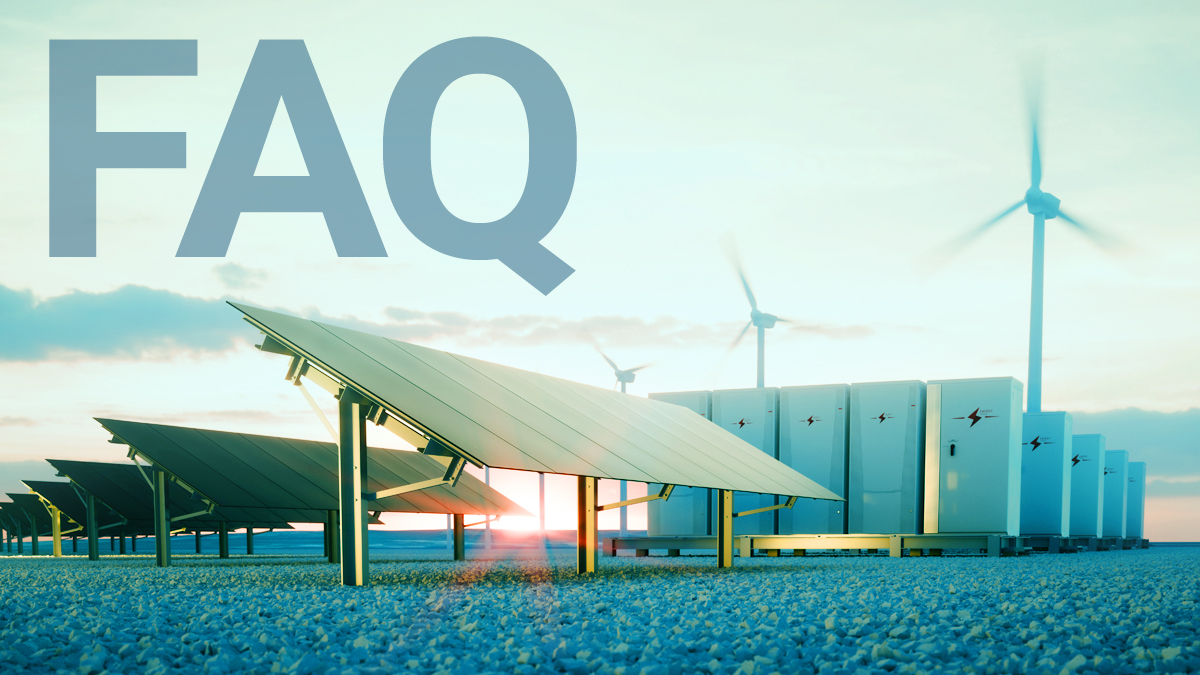Energy Storage: Frequently Asked Questions

The use of Energy Storage Resources (ESRs) on the grid is growing in New York State. It has the potential to enhance energy production from clean energy resources while supporting improved grid efficiency and resilience. Here are some common questions about this burgeoning technology.
What do we mean by Energy Storage Resources (ESRs)?
ESRs are capable of receiving energy from the electric grid, and storing it for later injection back onto the grid. ESR technology includes grid-scale battery systems, pumped hydropower and flywheels (a device that stores rotational energy in a spinning wheel, generating power by resisting changes in speed). We have implemented landmark changes in our electricity markets to make it easier for ESRs to provide both energy and capacity to the electric grid. ESRs can also help grow renewable resources.
What are the benefits of energy storage?
Since grid operators must balance generation and consumption, the ability to store energy has the potential to add flexibility for grid operators to use generation and transmission resources more efficiently. Advances in technology and support from public policy have made energy storage more common and less expensive, creating greater potential for storage to support grid reliability and efficiency. Fully capturing these potential benefits required developing comprehensive rules and capabilities to integrate storage resources into the NYISO’s markets. Energy storage provides a path to increased renewables, thanks to the ability to store energy and offset the intermittency of renewable generation. Storage resources, along with other technologies and innovations, will play a significant role in meeting state clean energy mandates.
How do ESRs help with integrating renewable resources onto the grid?
With the growth of intermittent energy resources such as solar and wind power in New York, ESRs are important tools to balance the varying output of these renewable resources. In this way, we can balance the intermittent nature of renewable generation by storing energy produced during periods of low demand, and responding during times of higher demand. This will increase the efficiency and overall value of clean energy resources and ESRs in the wholesale energy market.
What are some of the other benefits of ESRs?
Energy storage can reduce transmission congestion, which arises when lower-cost energy in one region can’t be delivered to a different region due to the physical limitations of the transmission system. It can also improve the ability to shift power demand to respond to price signals and provide ancillary services such as voltage support services.
What are the newest market rules for ESRs?
NYISO is the first ISO/RTO to allow full participation of ESRs in competitive wholesale markets. These new rules will work in conjunction with rules that will expand capacity market eligibility to resources that can store as little as two hours-worth of energy. This will help position New York State to meet the aggressive mandates in the Climate Leadership and Community Protection Act, which calls for a 70% clean energy grid by 2030 and a zero-emission grid by 2040. The act also calls for 3,000 megawatts of energy storage to be added to the grid. The new rules recognize the unique capabilities of ESRs to help grid operators meet demand, manage the variability of intermittent resources, and potentially defer transmission upgrades. This work builds upon the ESR benefits described in the DER Roadmap released by the NYISO in 2017.
What additional rules are we working on to facilitate ESR integration onto the grid?
We are working on rules that will allow developers to propose and operate an ESR and renewable resource as a single facility, streamlining market access and operation for the resources. This “hybrid storage model” will potentially improve the performance of intermittent renewable resources, supporting policy efforts to integrate more clean energy onto the grid.
What is the NYISO’s history in integrating energy storage?
The Federal Energy Regulatory Commission (FERC) saw integration of ESRs as a top national priority when it issued Order No. 841, Electric Storage Participation in Markets Operated by Regional Transmission Organizations and Independent System Operators. The NYISO was the first grid operator to develop market rules under this model, allowing energy storage to participate in wholesale markets as a regulation service provider. Through our 2017 State of Storage Report, the NYISO outlined an effort to expand the role of storage through a full-market participation model. That model allows grid operators and energy storage operators to take better advantage of the capabilities energy storage can provide to energy, capacity and ancillary services markets.

